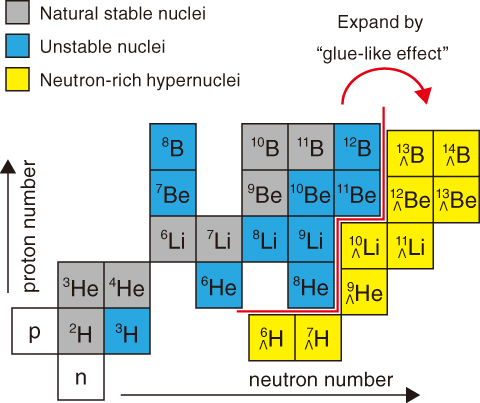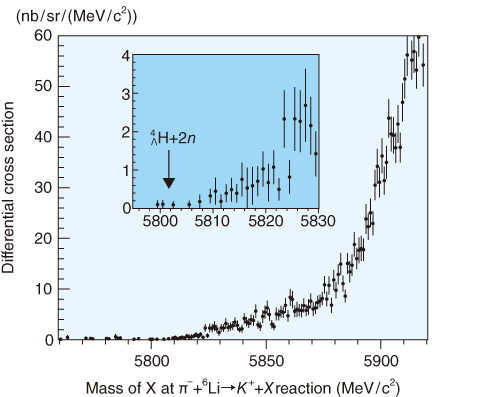
Fig.3-14 Nuclear chart of ordinary nuclei and hypernuclei

Fig.3-15 Mass of X in the reaction: π-+6Li K++X
K++X
Ordinary nuclei comprise nucleons, i.e., protons and neutrons. On the other hand, Λ hypernuclei comprise one Λ particle together with nucleons. The Λ particle, which is of the species “hyperon,” has a new degree of freedom: strangeness. This introduces an additional attractive force between the Λ particle and the nucleons, and causes a shrinkage of the nuclei. We call this a “glue-like effect.” Using this, the nuclear chart expands in the strangeness sector. Fig.3-14 shows the nuclear chart of ordinary and hypernuclei. The region of hypernuclei (represented by yellow boxes) can be expanded into the neutron-rich region.
Thus, we attempted to produce a 6ΛH hypernucleus, which comprises one proton, four neutrons, and one Λ. The core nucleus 5H is unbound. Success in making 6ΛH by adding a Λ could allow the production of very neutron-rich nuclei, with neutron-proton ratios as large as four.
The FINUDA (FIsica NUcleare a DAfne) group has reported three candidate events for 6ΛH. However, the error in the mass was as large as about 1 MeV/c2. We should confirm the mass with a larger amount of data.
This study was conducted with the K1.8 beam line of J-PARC’s Hadron Experimental Facility. 6ΛH is produced via the reaction π-+6Li→K++X(X=6ΛH), which changes two protons to one neutron and one Λ particle. Fig.3-15 shows the mass spectrum of X. The arrow in the inset indicates the sum of 6ΛH and two neutrons, and thus, the maximum-mass threshold of 6ΛH. Unfortunately, no significant peak structure was observed around this arrow. An upper limit of the cross section was estimated to be 1.2 nb/sr. From this result, we determined that the production cross section of 6ΛH must be much lower if it exists and indicated that there is room for the discussion of the theoretical model of the production mechanism.
<Previous: 3-6 | Next: 4 Nuclear Science and Engineering Research >